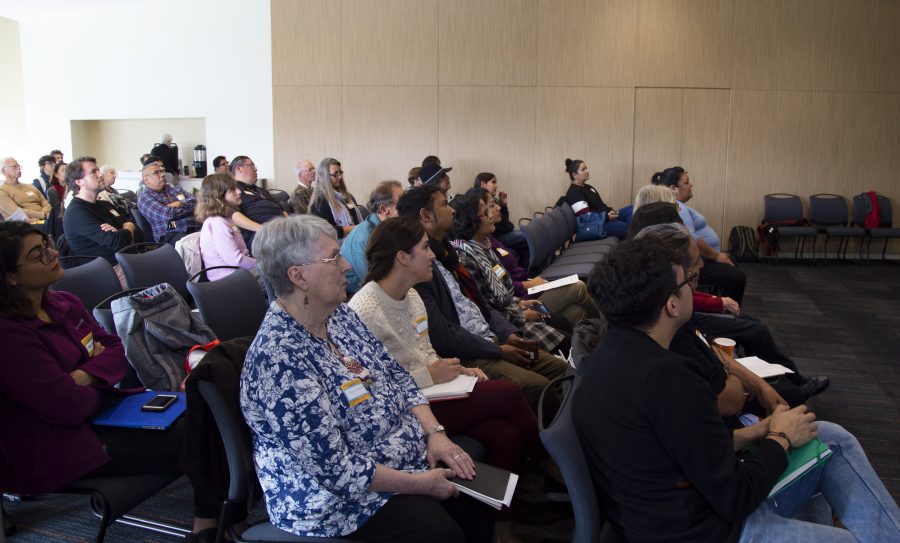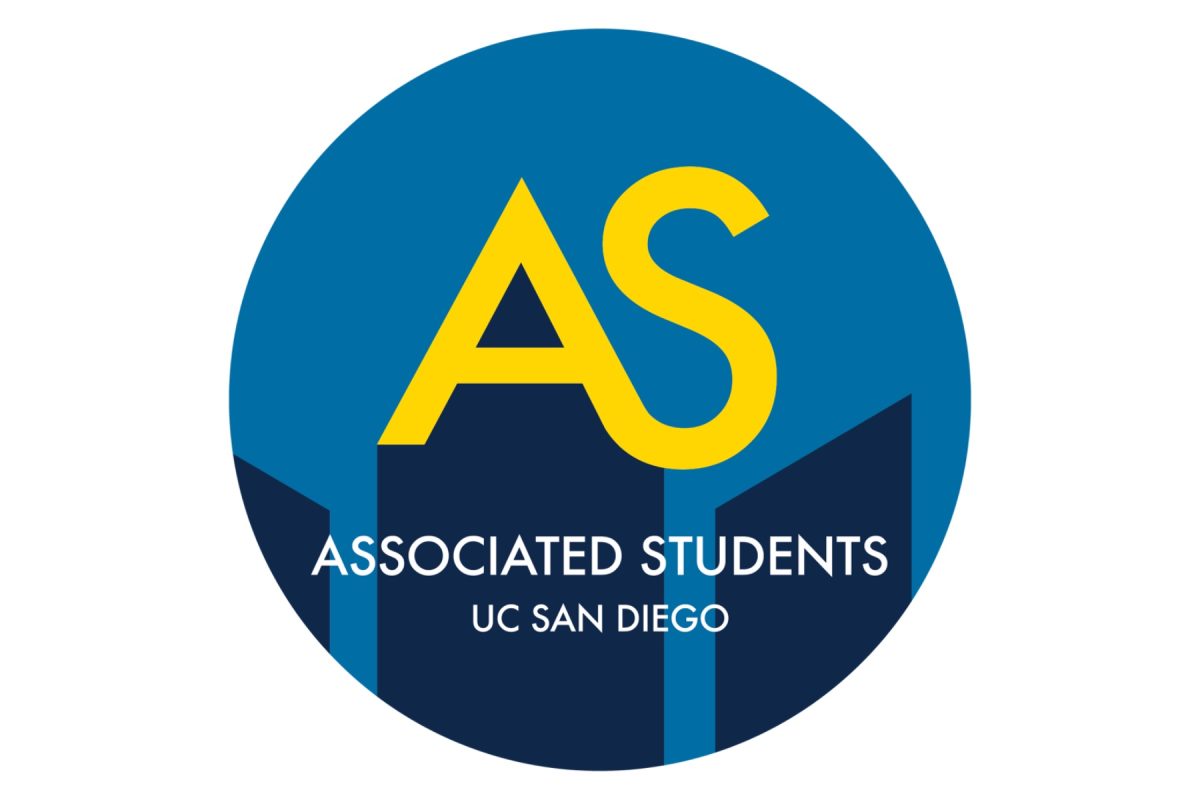UC San Diego held its inaugural Symposium on Indigenous Language Communities of the Californias on Thursday Nov. 21 in The Forum at Price Center. The event, co-sponsored by the UCSD department of linguistics, the Division of Global Education, the Intertribal Resource Center, the Graduate Student Association, the Division of Social Sciences, and the San Diego chapter of the Fulbright Association, included panel discussions and presentations by Native American scholars and community members with a focus on language reclamation and revitalization strategies.
Representatives from the Cupeño, Luiseño, and Cahuilla tribes of Southern California and the Kumeyaay tribe of both Baja California and Southern California attended. The event was inspired by the United Nations, declaring 2019 as the International Year of Indigenous Languages.
UCSD linguistics graduate student and Cahuilla tribe member Raymond Huaute, who specializes in linguistic description and documentation of the Cahuilla language, noted that the event had been in the works prior to the UN’s announcement.
“There have been many different conferences and symposiums that are celebrating [2019 as the International Year of Indigenous Languages], but they seem to not have any specific outcomes other than acknowledging the declaration,” Huaute told the UCSD Guardian. “We wanted to set ourselves apart … by doing an event that had the goal of [achieving] deliverable outcomes.”
Next Week!
The Symposium on Indigenous Language Communities of the Californias offers an opportunity to learn more of the linguistic heritage of the region.
The Forum @ UCSD Price center
9:30 AM-2 PM
Thu Nov 21 pic.twitter.com/lPTbT4gqhn— SDSU LSA (@LinguistsSdsu) November 14, 2019
The symposium began with a Kumeyaay prayer delivered by Dr. Stanley Rodriguez, a member of the Kumeyaay tribe and a UCSD Ph.D. graduate.
“We ask that with this meeting that we gain power,” Dr. Rodriguez translated. “Many of our languages are becoming like embers, which we wish to fan them like a flame again. Make [the languages] strong again.”
Native American academic researchers and tribe member speakers presented research and offered their perspectives on indigenous issues at the symposium. A key focus of these presentations was on native perspectives and how native languages have evolved to their current state.
The Symposium also included a cultural performance by bird singers from the Kumeyaay and Cahuilla tribes. The lyrics of the songs were about stories of indigenous oral history and native traditions that date back to the pre-Columbian era.
Near the end of the event, a panel discussion of tribe members and scholars was moderated by Elena Hood, the director of the ITRC. The panelists included Dr. Rodriguez, Huaute, Yolanda Meza from the Kumeyaay tribe of Baja California, Diana Duro from the Cupeño tribe, and Amy Admire and Ed McEnespy from the Luiseño tribe. The panelists talked about a wide range of indigenous issues including cultural revitalization and external factors such as poverty that have impacted these efforts.
San Diego County has 19 federally-recognized Native American reservations, the most of any county in the United States. UCSD itself is built upon the lands of the indigenous Kumeyaay people.
Kumeyaay remains were unearthed in 1976 under the Audrey Geisel University House, the UCSD Chancellor’s private residence located on the seaside cliffs of La Jolla. There was controversy over whether to examine the remains for scientific research or to return the remains to the Kumeyaay community, and whether the federal government or tribal nations had final say on the decision.
The event organizers discussed potentially hosting future symposiums in order to shine a light on indigenous issues and actions that can be done on-campus to create awareness for the student body.
Nina Hagen Kaldhol, a UCSD linguistics department graduate student and co-organizer of the event, said that one potential idea could be placing Kumeyaay translations of signs around campus.
“This is inspired by something that I saw at the University of British Columbia,” Kaldhol said.“They have [this] with [their local language Musqueam] and it’s a very powerful thing to see all these signs everywhere in the local language. It’s a way to [show that] we are on the land of the Kumeyaay nation, and we should acknowledge that, and respect that and know what that means.”
https://www.instagram.com/p/B5MLP2LneUv/?utm_source=ig_web_copy_link
On the same day of the Symposium, Thurgood Marshall College held a ceremony unveiling the new Kumeyaay community garden in front of the Thurgood Marshall Administration Building. The garden is intended “as part of building representation and community that center the Kumeyaay and the native plants that are central to their way of life.”
Slides, photos, and videos for the Symposium on Indigenous Language Communities of the Californias will be made available on the department of linguistics’s website in the upcoming weeks.
Photo by Rujia Xie.















thoptv • Jan 5, 2020 at 3:22 am
this is a very nice article …do u want more news like this just simply have a click https://thoptvapp.com/